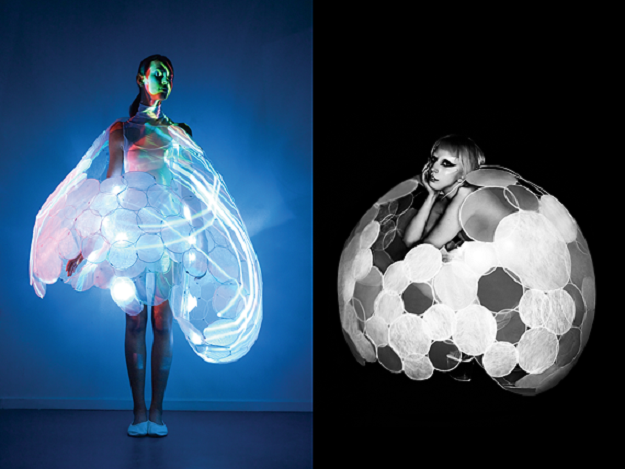
We’ve seen hundreds of wearable tech pieces trending and emerging since last year. From technology-integrated clothing, to smart accessories, to virtual reality apparatuses like Google Glass, the path this technology has embarked on is dynamic and inevitable. How peculiar would it be to wake up in the morning and throw on a completely tech-integrated ensemble? For example, your jacket’s pocket would have phone charging capabilities, your shirt would provide solar power, and your glasses could radiate data like the glow of your computer’s screen. This amalgamation leaves tech and fashion aficionados alike pondering how these industries will be able to unite like a buttonhole and a button. There must be a way for the fashion industry to collaborate with the world of technology to produce highly coveted garments that can be sold in the manner of prê t à porter. Will intelligent clothing soon be as ubiquitous as having a smartphone in our pockets? There has to be a market for wearable technology that will catch on internationally. A fair ground in the digital and design industries must be established where form, affordability, functionality, and branding will all be accounted for when technology and fashion connoisseurs inquire, “What’s next to become à la mode, and how can I execute this endeavor?”
Wearable technology through the ages
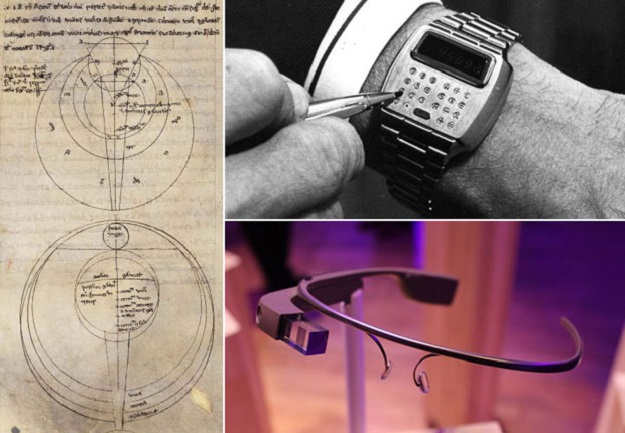
Let’s take a look at a brief rundown of what catalyzed our current migration toward wearable technology. MIT professor Edward Thorp revealed plans for a wearable computer in 1961 that enabled users to cheat at roulette. In the 1980s, the calculator watch was the first piece of wearable technology ever to be readily worn. 1994 brought a wireless wearable webcam. Many people thought civilians were talking to themselves in the streets when Bluetooth headsets became popular in 2000. The Tinmith wearable computer provided an augmented reality experience way before Google Glass. Nike and Apple teamed up in 2006 to create an athletic companion for users to sync their movements to their iPods. Other devices in the early 2000s included the FitBit and wearable W200 computer, although neither of them took off.
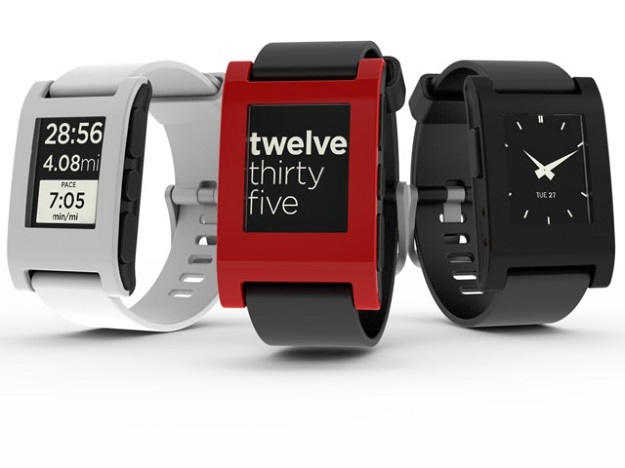
In 2012, the Pebble watch crowdsourced on Kickstarter to fund its goal of becoming a fashionably popular smartwatch. Google Glass was preorder-able at the end of 2012, and officially hit the market this year. In terms of technologically integrated fashionable garments, few products were invented until 2013. This year, we’ve already seen great shakes in terms of new fashion technology and various wearable gadgets and gizmos.
Smart and stylish clothes
The notion of smart clothing is much more difficult to execute than what meets the eye. Innumerable garments have been innovated to track fitness. Wearable gear like the FitnessSHIRT and smartwatches can track the wearer’s heart rate and breathing to ensure they’ve received an adequate workout. A type of color-changing fabric has been fabricated that experiments with external surroundings to create a form of bodily camouflage for its wearer. The techy textile could be implemented by fashion designers to not only be fashion-forward, but to also stay on-trend in the ever-changing vortex of style.

An invisibility cloak of sorts
Other technology textiles, like the kind used to enable invisibility, will specifically be of benefit to members of the military. They could gain a slick vantage point over their opponents by literally remaining under the radar. These chameleon-esque textiles might just be available one day for anyone in the world to purchase or take a DIY approach and make their own designs.
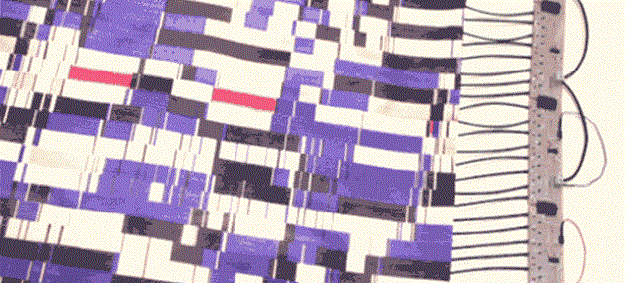
Chameleon-esque, color-changing fabric
Last December, Electronic Products reported the scoop on Motiif, a tech-integrated trench coat with Bluetooth, Wi-Fi, and charging capabilities. Wireless clothing such as this trench won’t necessarily change the overall outlook on how people recharge every time one of their electronics loses power. More than likely, users of an electronic garment like the smart trench will only charge their electronics and use the Wi-Fi of the coat when they’re wearing it. And the battery source that is in the coat actually needs to be recharged by a larger power source, i.e. the socket in your wall, so until batteries are created that don’t require recharging, this system is not necessarily functional. Another issue for wire-integrated clothing is safety. Is it hazardous for humans to be walking Wi-Fi signals with wires and charges draped onto our bodies? More tests and research need to be performed in these departments to ensure that no one is walking around town ready to blow up like a bomb of spontaneous combustion.
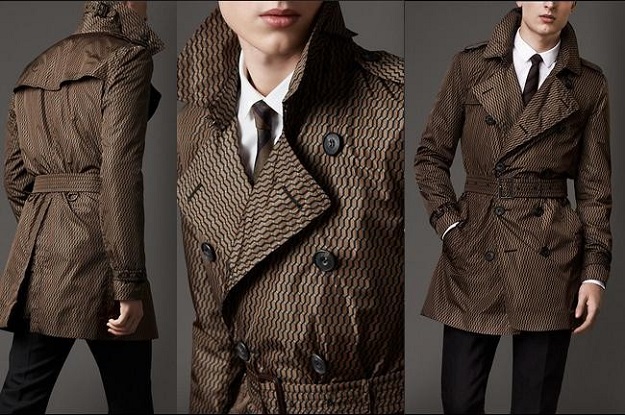
When wireless trench creator Rafael Balbi was asked about the level of trendiness and allure that wearable tech exudes, he stated, “The biggest challenge will be in creating an experience that isn’t about providing data already accessible to us (text messages, phone calls). The challenge is in providing something that is unique to our vision. This is a reason I think the majority of smart watches are failing…they aren’t providing things that are substantially different from what is already on your phone.” As a proponent of Google Glass, he cited Minority Report since it provided “a peek into the future of user experiences,” and how wearable technology is “headed into a very open field that is full of possibilities.”

The million dollar nanotechnology-enabled air-conditioned suit was designed for wearers who want to channel their inner James Bond alter ego. Retailing at $3.2 million from the company Suit Art, the bedazzled Diamond Armor suit is encrusted with diamonds and weighs in at 140 carats per piece. Technologically sound and totally fashionable, this suit is bulletproof, waterproof, air-conditioned, and is just about ready to star in its own action-adventure film. Diamond Armor is a prime example of a functional wearable that could just possibly save your life.
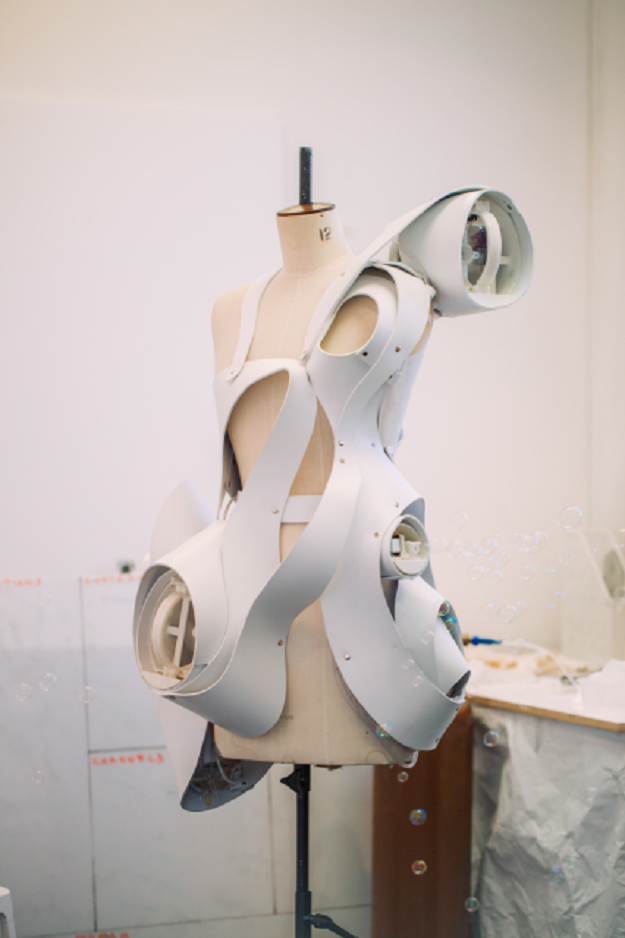
Fashion technology design houses, like London-based Studio XO, magnificently hone their skills to push all boundaries in regards to pioneering wearables. Designing for international superstars such as Lady Gaga, this atelier makes smart, intuitive, and futuristic garments; the list of apparel fitted for Gaga includes a bubble-blowing 3D-printed dress, glowing light up garb, and a flying drone-like ensemble called “Volantis.” This company has also outfitted singer Azealia Banks with a digitalized mermaid bra, programmed to twinkle with her live music. Arcade Fire’s lead singer, Win Butler, once commissioned Studio X0 to create a helmet to make Prince’s face appear over his own during performances.
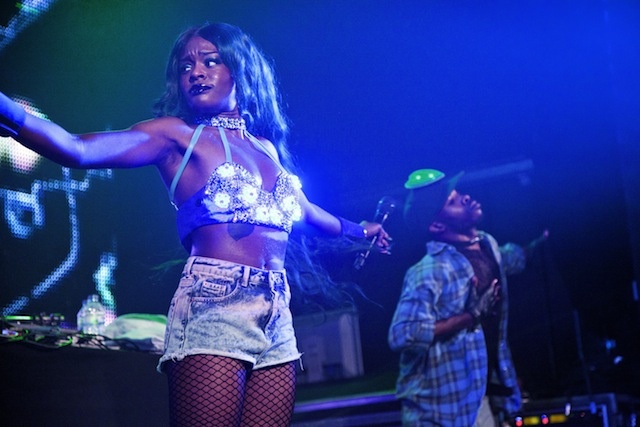
Azealia Banks' digital mermaid bra
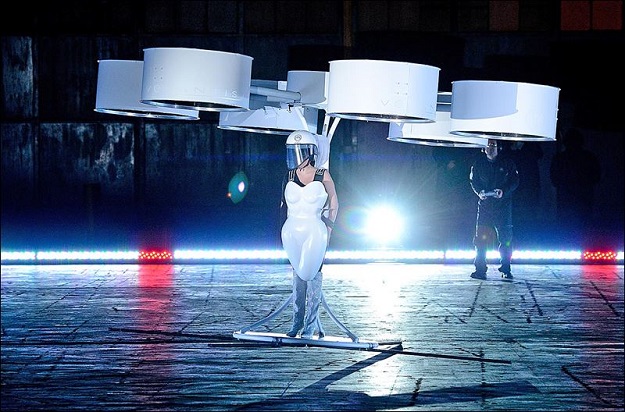
Gaga's flying dress, Volantis
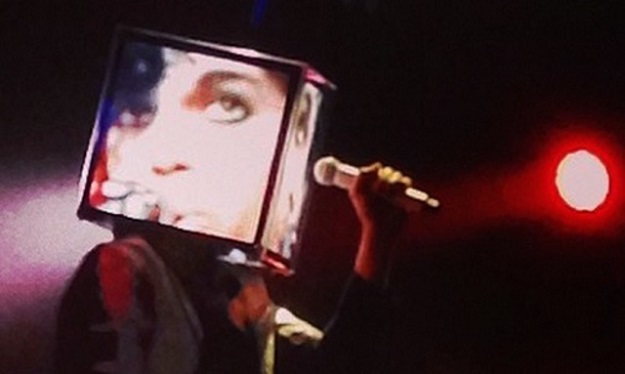
Arcade Fire's frontman sported a Prince helmet
The proof-of-concept, joining tech with fashion, is explicated in the newly released film, The Next Black. In the clip below, Studio XO co-founder Nancy Tilbury states, “I think that our relationship with clothes in 20 years will be really interesting… I wonder if we’ll even wear clothes or if we’ll fully have digital skin.”
Electronic Products recently observed the DIY Urban Armor line of fashionable electronics that “challenge the way commercial wearable technology is currently developing. In place of mass-produced, data-focused devices, the Urban Armor pieces are custom, customizable, and intervene in the physical world.” The smart dress has internal sensors and motors to protect the wearer’s personal space while in public, sensing if someone is invading your purple circle. Inventions like this dress are functional, fashionable, and DIY. Like Urban Armor, some are open sourced so even you can personalize your own wearable at home.

NYU grad students in the Interactive Telecommunications Program developed a Smart Hoodie, invented to automatically text pre-programmed contacts. The team wanted to execute a totally new “alternative interface that wasn’t a handheld device” that was wearable and technologically advanced. A smartphone hoodie is a strong concept that could be further established in the future manufacturing of smart clothing.
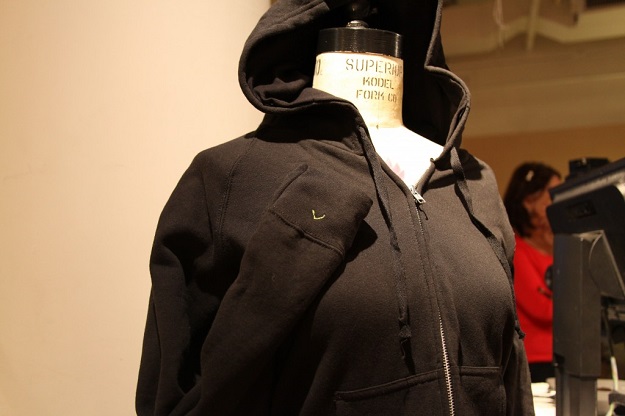
It’s interesting to note the consumer’s mindset when purchasing a wearable, and when the aforementioned products will be deemed trendy in the years to come. Are consumers sporting wearables just for the sake of having something that’s on trend, a product they can proudly Instagram and demand tally recognition for their coolness by owning a wearable? Or is it because it’s a product that they can actually use, a device that will help them efficiently accomplish quotidian activities?
Wearables weave into corporate America
Google Glass has been a frontrunner in the realm of wearable technology when it comes to form, function, and user experience. When the company Google first publicized its plans for this technology, it sparked much backlash from media outlets and the public; they expressed their outrage, believing this device would impede on individuals’ privacy. Personally, I think this piece of wearable tech is pretty remarkable and progressive, but isn’t it kind of bizarre to think that we might one day live in a world of augmented reality where you don’t even have to introduce yourself to strangers to know their names and hometowns? That being said, Balbi proclaimed his adoration for Google Glass, stating that the “glass will provide a thin technological film to our outside environment. I very much like the idea of looking in a certain direction and being aware when certain buildings were developed, or something you wouldn’t readily be able to look up on your phone.”
A huge setback that is hindering the concept of tech-integrated clothing is the legalities of it all. An extensive amount of the tech would need to be licensed to fashion houses before it is incorporated into the clothing. For example, if a designer wanted to incorporate Google Glass into all plans for a fall runway collection, this would not be a simple process and the idea could be shut down by Google. Furthermore, the technology that needs to be used in the garments is already patented. If and when designers want to fuse this tech with their designs, they would need to cut an expensive deal with the tech companies and contract a squad of developers to set up the tech. What kind of system will be made, and will a partnered ecosystem arise between these two realms to allow for mutually successful endeavors within the industries?

With an array of examples of how successfully beneficial rapports can be established between overlapping industries such as fashion and technology, there is undeniable hope for such projects. In 2006, Nike and Apple teamed up for a global collaboration that combined sports and music with Nike+iPod products. Some of the devices made under this joint tutelage included sensor-loaded Nike+ Air Zoom Moire footwear that communicated with the wearer’s iPod to track fitness stats like distance traveled, calories burned, and pace. Users received real-time audio feedback to stay on-point during workout sessions. This endeavor got celebrity endorsements to sell the product and make it more enticing.
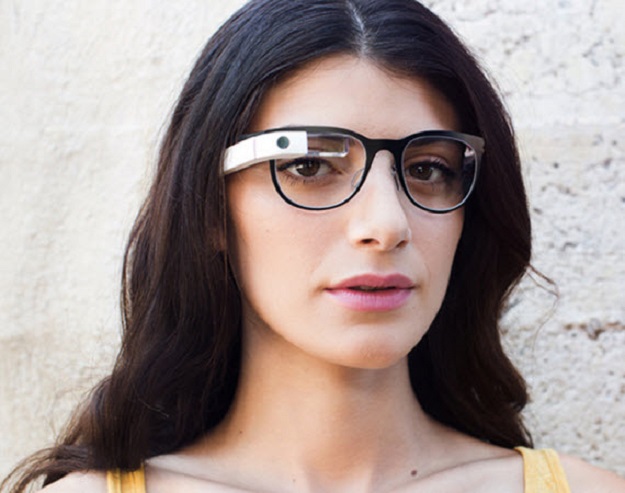
In March, the corporate side of Google announced that they would be partnering with Luxottica to give Google Glass users the option of attaining Ray Ban vision. These glasses will essentially be Google Glass but with stylish Ray Ban frames; the company will also produce prescription eyewear for the Glass to attract even more users. Similarly, Oakley will also make tech-integrated Google Glass as per its agreement with Google. These partnerships prove that ways can be made to unite the two industries in a mutually advantageous way working together toward a wearable, tech-savvy means. Furthermore, there are tremendous possibilities for upcoming big data analytical implications with Glass wearers for businesses, health, and educative purposes that will soon be delved into by researchers.
3D-printing and fashion
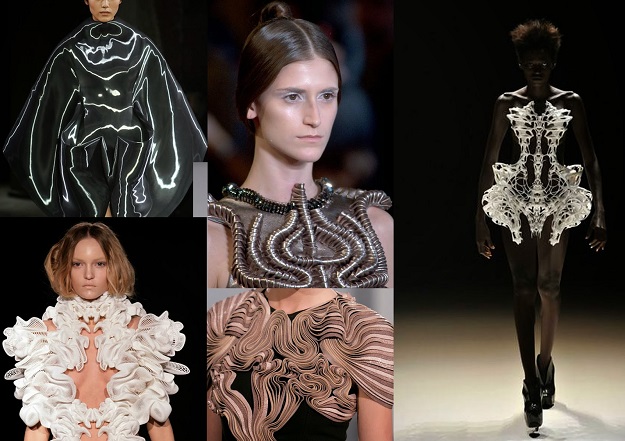
3D-printed dresses by designer Iris van Herpen
Throw 3D-printing technology into this mix, and when the tech end of this equation is perfected practically any garment can be printed at will. How will this work and how could companies jump on board? Brands already operating in the fashion industry will more than likely not be a proponent of 3D-printed clothing as it will likely cut into their sales. For example, if someone uploads a design of a Chanel suit, 3D-prints some copies, and decides to sell them, that “designer” or printer of the 3D printed clothing could be slapped with a copyright infringement lawsuit from Chanel. The legal document would state that this 3D-printing concept is taking away business from their namesake and that people are confused whether it is indeed from the Chanel house itself. 3D-printing from brand-provided codes would slash overhead costs for corporations and could one day eliminate clothing manufacturing altogether.
Perhaps when 3D-printing becomes more readily used around the world, brands will sell the codes for the clothing as opposed to selling physical garments so fashionistas can print their own garments at any time. Maybe retailers will sell yearly subscriptions of codes for their clothing so people can fill their wardrobes with 3D-printed garb. But will 3D-printed clothing be the same quality as store-bought garments? Will fashion brands sell 3D templates that can be printed, and then the mass public will be able to use their own 3D printers to actualize the designs?
Imagine one day far into the future — when you wake up in the morning, your pajamas will catapult you from your bed and into your newly 3D-printed ensemble. This getup will be so outstandingly advanced that when you vocalize your destination, your outfit will walk you to where you need to go. Everyone will love your outfit, but they won’t have to ask where you’ve purchased it from because they can see through their virtual reality devices that you’ve 3D-printed it yourself by a brand-provided code.
The trend of wearable technology will continue to develop, and thus will never fade. With a proven track record of captivating audiences that has been documented over time, there is not a chance that wearable technology will be over anytime soon. New innovations are always on the horizon and the possibilities for groundbreaking design revelations are infinite. Each time more advanced equipment sees the light of day, there will be more wearable devices and garments ready to roll, captivate the astounded consumer, and make an astounding profit.
Advertisement
Learn more about Electronic Products Digital





